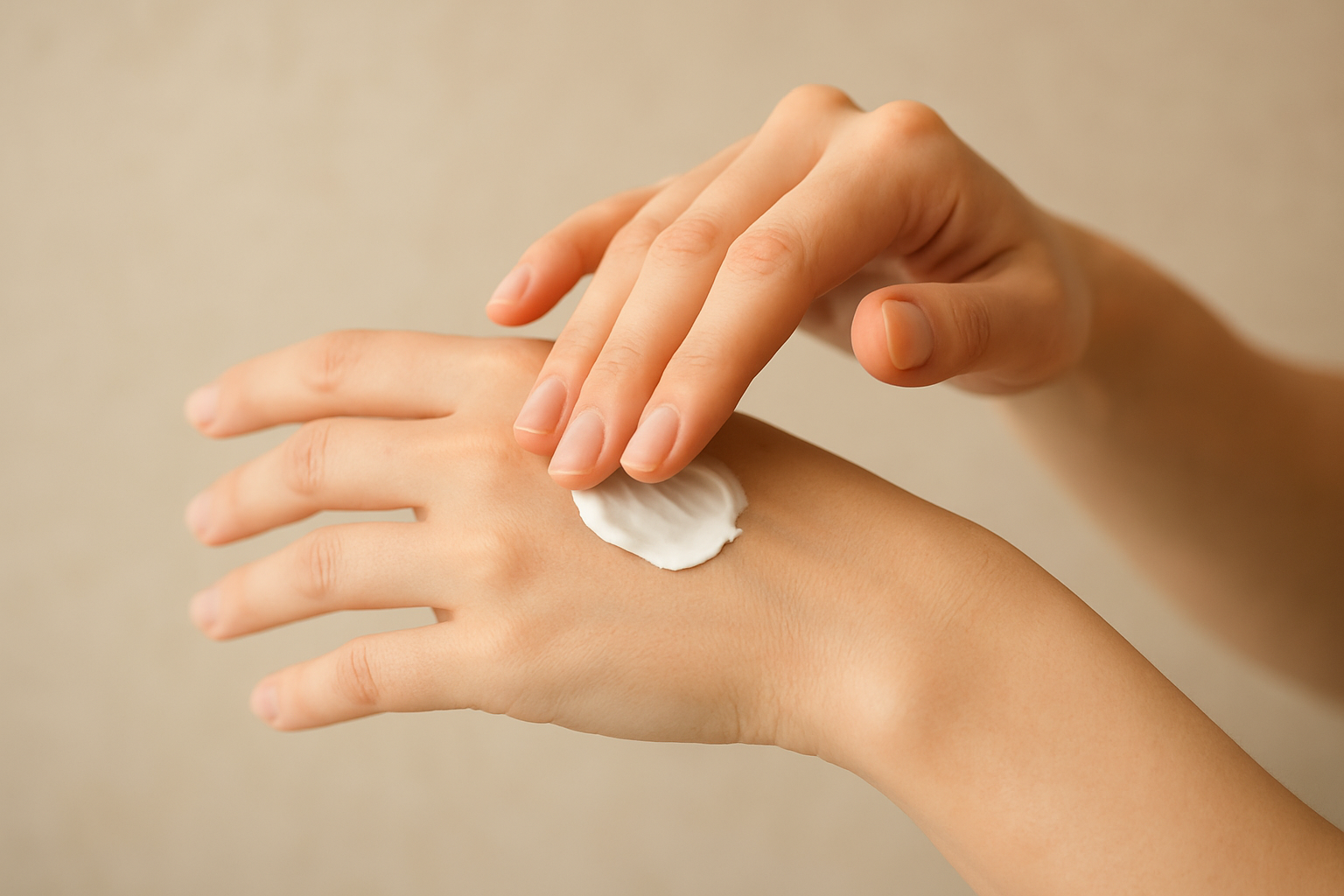Our hands work harder than almost any other part of our body. They help us cook, clean, type, carry, and create. Yet, despite their constant use, hands are often overlooked in beauty and self-care routines. Daily care for your hands doesn’t require expensive products or complicated steps, just small, consistent habits that make a big difference.
In this guide, we’ll explore practical, easy-to-follow tips for keeping your hands soft, healthy and comfortable every day, along with insights from skincare professionals who share how the right ingredients can make all the difference. We’ll also compare popular moisturizing components, such as shea butter, glycerin, and hyaluronic acid, explaining how each one helps to restore hydration and support skin’s natural balance. Whether your hands are exposed to constant washing, cold weather, or daily wear, this guide will help you choose the best care routine for your needs.
Why Hand Care Is So Important
Hands are exposed to water, soap, cleaning products and the environment more than most other parts of the body. Over time, this can lead to dryness, rough patches, or even small cracks in the skin. Taking care of your hands regularly helps to:
- Maintain soft and smooth skin.
- Prevent discomfort caused by dryness.
- Support a polished appearance that boosts confidence.
- Protect your skin’s natural balance.
Wash Gently
Frequent handwashing is essential for hygiene, but harsh soaps and hot water can strip away natural oils. Instead:
- Use lukewarm water rather than very hot water.
- Avoid over-scrubbing, which can cause irritation.
Choose the Right Hand Soap
Choosing the right soap is essential for keeping the skin clean without stripping away natural moisture. Opt for mild, nourishing formulas that balance hygiene with care.
💡 Tip: Prefer lukewarm water over hot water and always apply hand cream after washing to keep skin soft and comfortable.
Moisturize Regularly
Moisturizer is the key to healthy hands. Here’s how to make the most of it:
- Apply a small amount of hand cream after every wash.
- Keep a travel-sized moisturizer in your bag, car, or desk.
- At night, apply a thicker cream or balm and let it work overnight.
Ingredients like shea butter, almond oil and glycerin are especially effective at keeping hands soft.
Decoding Hand Creams: Which Ingredients Actually Work?
Instead of just picking a cream by its brand, learn to read the ingredient list. The right components can target your specific needs, from extra nourishment to lightweight daily hydration. Here’s a breakdown of what to look for:
For Intense Repair & Barrier Protection:
- Shea Butter: A rich emollient that helps maintain skin comfort, especially in cold weather.
- Ceramides: These components help support skin’s natural balance, making them suitable for sensitive skin.
For Deep Hydration:
- Glycerin: A powerful humectant that draws moisture from the air into your skin. It’s a classic, reliable ingredient for everyday hydration without a heavy feel.
- Hyaluronic Acid: Known for holding up to 1000 times its weight in water, this ingredient provides deep, long-lasting hydration without a greasy residue.
For Softness & Nourishment:
- Almond Oil: Lightweight and rich in Vitamin E, it nourishes the skin and is especially good for softening cuticles and rough patches.
- Jojoba Oil: Very similar to our skin’s natural sebum, it absorbs quickly and provides excellent moisturization, leaving hands soft and smooth.
For a Smooth Feel & Quick Absorption:
- Dimethicone (a type of silicone): Creates a smooth, silky feel on the skin and helps to lock in moisture. It’s excellent for providing an immediate non-greasy finish.
💡 Pro Tip: For best results, look for a cream that combines a humectant (like glycerin) to draw in moisture, an emollient (like shea butter) to soften, and an occlusive (like dimethicone) to seal it all in. Use a light hand cream during the day for quick absorption and apply a richer cream before bed for deep hydratation.
Protect Your Hands
Prevention is just as important as treatment. Whenever possible:
- Wear gloves when washing dishes or cleaning with household products.
- Use gloves during cold weather to prevent chapping.
- Avoid prolonged exposure to very hot or very cold water.
Don’t Forget Your Nails and Cuticles
Healthy nails add to the appearance of your hands. Simple steps can keep them neat and strong:
- Keep nails trimmed and shaped.
- Moisturize cuticles with a nourishing oil.
- Avoid biting nails or pulling at cuticles, which can help the skin.
End Your Day Right: A Soothing Evening Plan
Hands benefit from an overnight care ritual:
- Apply a generous layer of nourishing hand cream. Slip on soft cotton gloves to help lock in moisture while you sleep.
- Wake up with hands feeling refreshed and moisturized.
Exfoliants for Softer, Smoother Hands
Exfoliating your hands once or twice a week helps remove dead skin cells, smooth rough patches and improve how well moisturizers work. The key is to choose a gentle scrub that polishes without causing irritation.
💡 Tip: Always follow exfoliation with a rich hand cream to lock in hydration and protect the skin barrier.
Simple Daily Routine for Hands
Here’s a quick routine anyone can follow:
- Wash gently with mild soap.
- Moisturize right after drying.
- Reapply hand cream during the day as needed.
- Protect with gloves when necessary.
- Nourish at night with a richer cream.
Wrapping Up: Small Hand Care Habits Make a Big Difference
Caring for your hands is simple but makes a big impact on how they look and feel. By washing gently, moisturizing often and giving your nails and cuticles attention, you’ll enjoy smoother, more comfortable skin.
Make hand care a small daily ritual, you’ll thank yourself every time you look down at your hands.
Disclaimer:
This article is for general beauty and skincare information only and is not a substitute for professional medical advice. Always consult a dermatologist or healthcare provider if you have allergies, irritation, or persistent skin issues.
